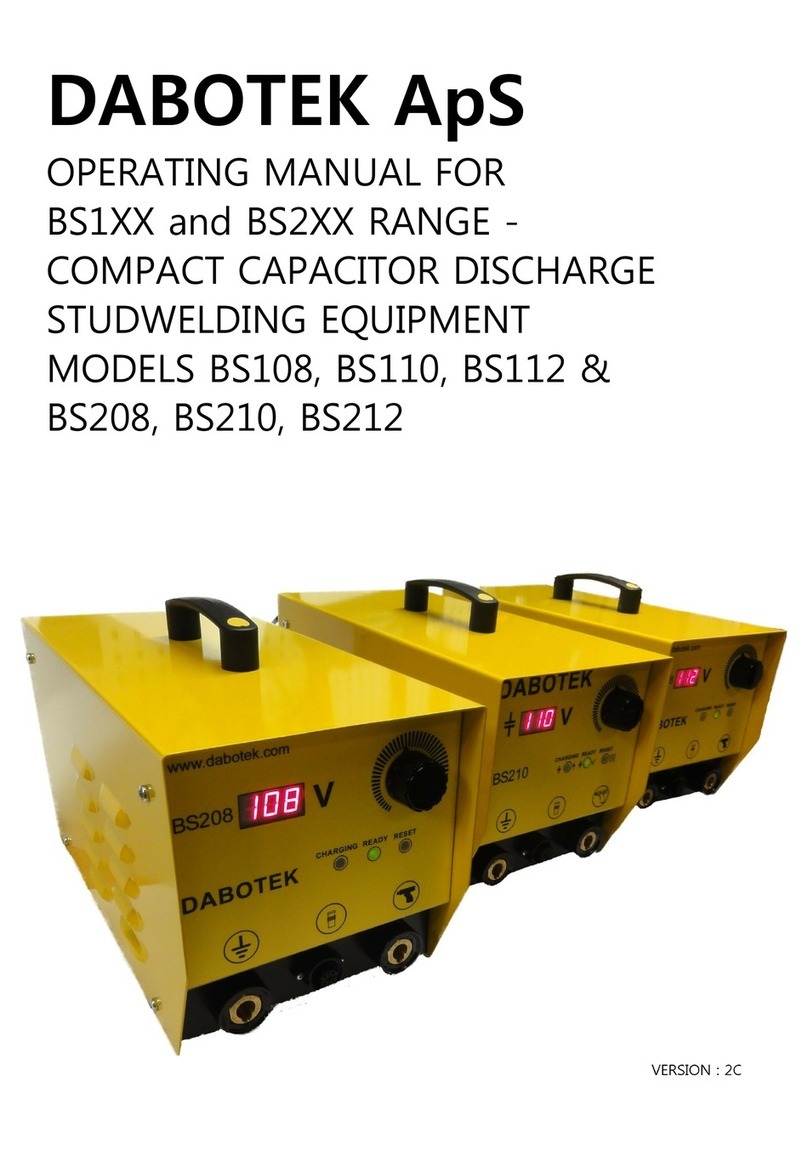
Table of contents
Introductory information.....................................................4
Target group of these operating instructions.....................4
Special qualifications and regulations...............................5
Meaning of symbols..........................................................6
Field of use of the stud welding equipment ......................7
Features of the stud welding equipment...........................7
Safety information ...............................................................8
Installation and connection ..............................................12
Checking scope of delivery.............................................12
Choosing place of installation.........................................13
Transport.........................................................................13
Connection......................................................................14
Setting-up equipment and welding gun...........................15
Connecting earth cables to work piece...........................15
Setting-up welding gun...................................................15
Adjusting equipment .......................................................20
Welding...............................................................................21
Tips for stud welding.........................................................22
Studs, chucks and ceramic ferrules................................22
Adjustments....................................................................22
Avoiding magnetic blowing action...................................24
Vertical weldings.............................................................25
Checking weld joints.......................................................26
Cleaning and attendance ..................................................28
Maintenance.......................................................................29
Blowing out equipment interior .......................................29
Checking plugs and cables.............................................30
Eliminating faults...............................................................31
Technical data ....................................................................32
Guarantee...........................................................................33
Where to put the old equipment.......................................34
Certificate of EC-conformity.............................................35
Index....................................................................................36
Your equipment in overview .............................................39
After-sales service.............................................................40
Tip:
Ifyouunfoldthelast
page you will find an
overview of the
equipment.
3






























